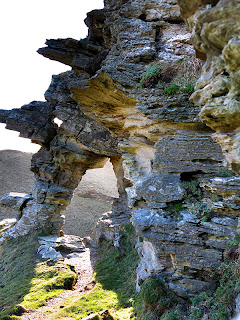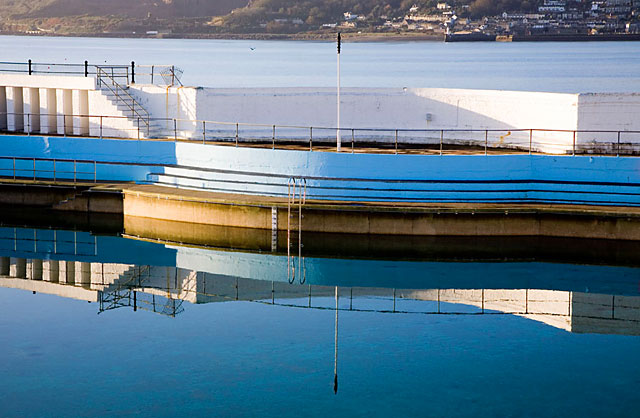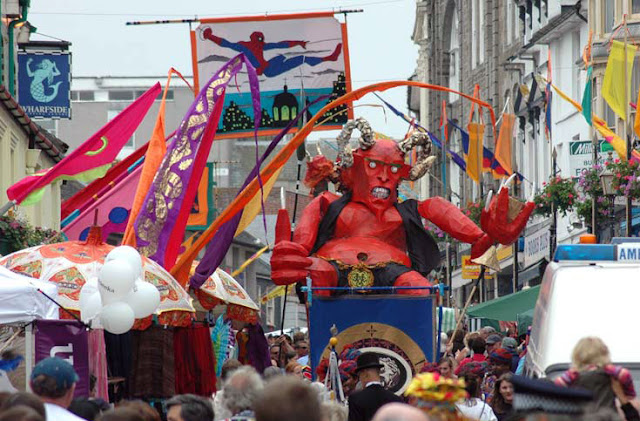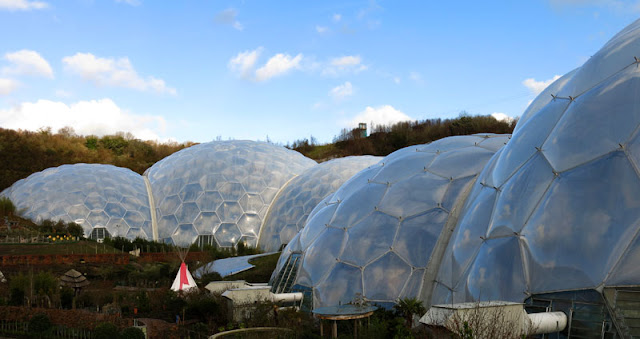 |
| Looking across to the Bar on St Agnes in the Scilly Isles |
I've just come back from a week's camping on St Agnes, my first trip to the Scillies. It seems like for everyone else camped there it is an annual pilgrimage with pitches booked a year in advance.
The campsite on St Agnes is Troy Town, named in reference to the nearby turf maze, or the farm on which it resides. The location of this campsite has to be one of the most idyllic anywhere (or on a south-westerly gale, the very worst!). Tents are pitched on fields which slope gently down to the very edge of the sea and the small rock and sand cove of Bergecooth. On an island of beautiful beaches, situated on an archipelago of beautiful beaches, Bergecooth is nothing special. Anywhere else it would be.
 |
| Periglis beach |
In the other direction is Castella down, guarded by the castle like Carns of Castella. It is on these downs, punctuated by numerous huge granite intrusions that the Troy Town maze can be found. It's one of those things that probably looks interesting from the air, but on the ground it is a little hard to really appreciate. The coast here is a different matter. The rocky coast is similar to the southern side of the Land's End Peninsula in Cornwall, but the rock forms are a bit craggier and frankly weirder. There are numerous rocks on these islands that are named after animals and other things they look like. It seems a fair few of them reside around here.
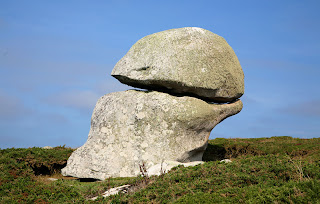 |
| The Giant's Punch Bowl! |
Overlooking Wingletang is one of St Agnes' best celebrated rock formations, the (Giant's) Punchbowl. This consists of one enormous rounded rock balanced atop an even bigger rock. I'm not entirely sure why it reminded anyone of a punchbowl to me it looked more like a huge …..
Whilst we're back on the subject of Scillonian rocks that look like things, back up the road is St Agnes' finest example; the Nag's Head. And yes it is a peculiar shaped rock with a protrusion that looks quite a bit like a nag's head - a nag being a bit of a rubbish horse.
 |
| The clear waters of Cove Vean |
By far the most popular beach on St Agnes is the Bar. Whilst it is next to the island's only pub that's not where the name comes from. It is a stretch of fine sand reaching from St Agnes to the small island of Gugh. There are sheltered waters to either side of the Bar making it safe to swim most of the time. However, at high tide the bar may become covered and the currents over the sands are particularly strong.
Back to the subject of pubs, yes there is a pub, and quite a good one; the Turk's Head. Whilst I wouldn't say the food is worth waiting for - and you will have to wait on an August evening - it serves a fine selection of ales and has plenty of outdoor seating overlooking the quay and Bar. Apparently the Turk's Head is so good that islanders from St Mary's have even been known to frequent it!
There are other eateries on the island. The High Tide Seafood restaurant is fairly upmarket affair by any standard and the menu looks great. Lots of local produce and a fusion twist thrown in for good measure.
For example: Cornish Squid noodles, chilli, lime and coriander with lemon oil or Wild Sea Bass fillet, steamed samphire, wild garlic prawns & caper butter to list just a couple. We did try and get a table one night but it was booked up.
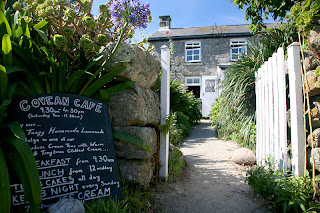 |
| Covevean Cafe - top Cream Teas! |
 |
| Scilly Cow - Troy Town Farm |
The other place to buy food is the Troy Town Farm shop, where you can be fresh dairy and meat produce from the farm. Oh, and ice cream in a variety of wonderful flavours including Madagascar vanilla and rose geranium.
I think that more or less covers my week on St Agnes. I did a lot of island hopping whilst I was there catching the ‘Spirit of St Agnes' from the quay on no less than four occasions. Not having a map or guide book made exploring a little more random but full of unexpected delights. One thing I did remember on the map was an interesting looking lake. I found it too, it's called Big Pool and it is largish, round freshwater pond in a field. Bit of a disappointment, I was expecting something, er, exciting?!
 |
| My home for the week :) |
So, what were my first impressions of St Agnes? Amazing in a word. That said, the weather was pretty perfect whilst I was over and it might have been a little different in driving south westerly rain. But still this is a place of astonishing natural beauty and its own very distinctive character. I don't know if it's because I stayed on St Agnes first, but all the other islands just didn't seem quite as nice (although a pretty good second all the same!)
A quick note on getting to St Agnes. Unless you have your own yacht (lots of people appear to) then you are going to be travelling to St Mary's either by boat (the Scillonian III) from Penzance or small aeroplane from near St Just. The boat takes just over 2.5 hours and the plane around 15 minutes. From St Mary's there is a boat service across to St Agnes that takes a further 20 minutes. If you are planning a day trip flying over is the obvious way, although it is much more expensive than a cheap day return on the Scillonian.
















